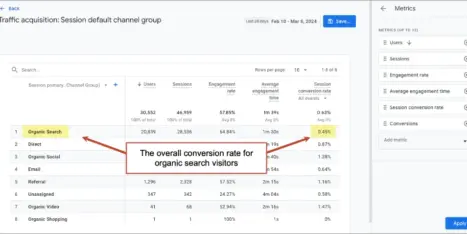Infographics may seem like just pretty graphics, but there is more to them than meets the eye. Infographics are a knock-out when it comes to SEO, and are only becoming more important for your content marketing mix.
It may befuddle you, but there are some exciting stats that prove the ROI that you can expect from infographics. One thing to know; 65% of the human population are visual learners. And 50% of our brain processes visual input. Which goes to show, 80% of the information will be retained for just one single infographic.
Related Post: How to use Infographic Data Visualization to Attract Qualified Leads
Infographic creation has exploded
In 2017, a study published in Forbes stated that 56% of businesses were using infographics for marketing and sales, 74% of marketers rely on visual messaging for social media, and 84% of them say that they have proven to be an effective media in their mix.
Since 2017 was the year that mobile finally cracked the majority of total web traffic (50.3%), the easy-to-view infographic was even better consumed and shared than it ever was before.
And they’re here to stay
With the rise of infographics, more and more marketers are relying on easily shareable visual information to replace text. In fact, marketers are also relying on infographics to replace traditional white papers, since customers and clients want pieces of information delivered to them in such a straightforward approach.
And with easy-to-use graphics creation tools like Canva, now a part of the online landscape, basic infographics are getting easier and easier to create. And, to go along with the mobile trend, it only makes sense that infographics are easy to digest on small displays.
Why SEO and infographics work together so well
Infographics have become an SEO staple these days, and now you’re learning how. You hear about link building all the time, now it is put into action; marketers can simply include an embed code in the infographic. And since infographics are so evergreen, they can get shared out everywhere, proving infographics a popular method for viral link building and attraction.
This is a major win for any marketer approaching SEO. Just think about the avenues to which these graphics are being shared: social media, company blogs, forums, email marketing. The avenues are endless. And now that more and more marketers are adopting this approach, we figure that the infographic will be around for a long time.
How to optimize infographics for SEO
Did you know? Infographics are “liked” and shared on social media 3x more than any other type of content. That information is simply astounding. This information, tied in with the fact that we take in visual information better, just makes sense.
Unbounce has even named infographics, “the most powerful tool in your content marketing arsenal.” However, since most infographics are saved as PNG, JPEG, etc, we know that Google can’t read these images as we read them. You are going to want to do a few things in order to properly optimize your infographics:
1. Do your keyword research
Even though this does not pertain to the body of the infographic, you still need to do keyword research for identifying a primary keyword phrase. If you are doing a search, you would do it as if you were researching any other type of content, you are just going to insert those keywords differently.
Infographics provide a family of search intent unto themselves. In addition to the 3 common types of searches: do (purchase or sign up), know (find information), and go (navigate a website), there is a fourth type of search query. The “link” query or “source citation” query. Think about it. We’re producing an unprecedented amount of content these days. Bloggers, doing research, rely on those that have put in work for them. Infographics are the answer to those types of queries.
2. Choose your ‘file name’ wisely
Do not, and I repeat, do not go with a generic file name. Be sure to include your keywords, from your keyword research, in the name of your file. You want to tell Google what you’re sharing, and “Image” just does not work if you want to optimize your content correctly.
3. Optimize your ALT text
Google also used the image alt text to determine what is exactly in an image. There may be an event where it does not load properly. This is also a very important step in optimizing your infographic for SEO and for success. Include your keywords in here, be succinct, and you will be golden.
4. URL tips
Here is another important function of your infographic: the URL. You probably already know this is an important step but make sure you have all the details. Do not go wild. Create a short URL with three to five words. Be sure to include some of your keywords in there as well, omitting adverbs.
5. Add an H1 tag
To be sure that Google “reads” your infographic, begin your post with an H1 tag. It certainly will not hurt to add an H1 tag. Give your infographic a leg up by doing this, and you will not regret it.
6. A good ole’ meta description
It will not hurt either to add in a meta description. In fact, it can only help. Remember to stick to the golden rules for a good meta description:
- Your meta description should be between 155-160 characters.
- Include your keyword phrase.
- Include a description of your Infographic content.
- Have a clear call-to-action (CTA).
7. Don’t forget supporting text
In the body of the post, you will also want to have supporting text. Include all of the relevant information from your infographic with some SEO friendly wording and phrases you used. This will round out your infographic, and give it a boost in search.



